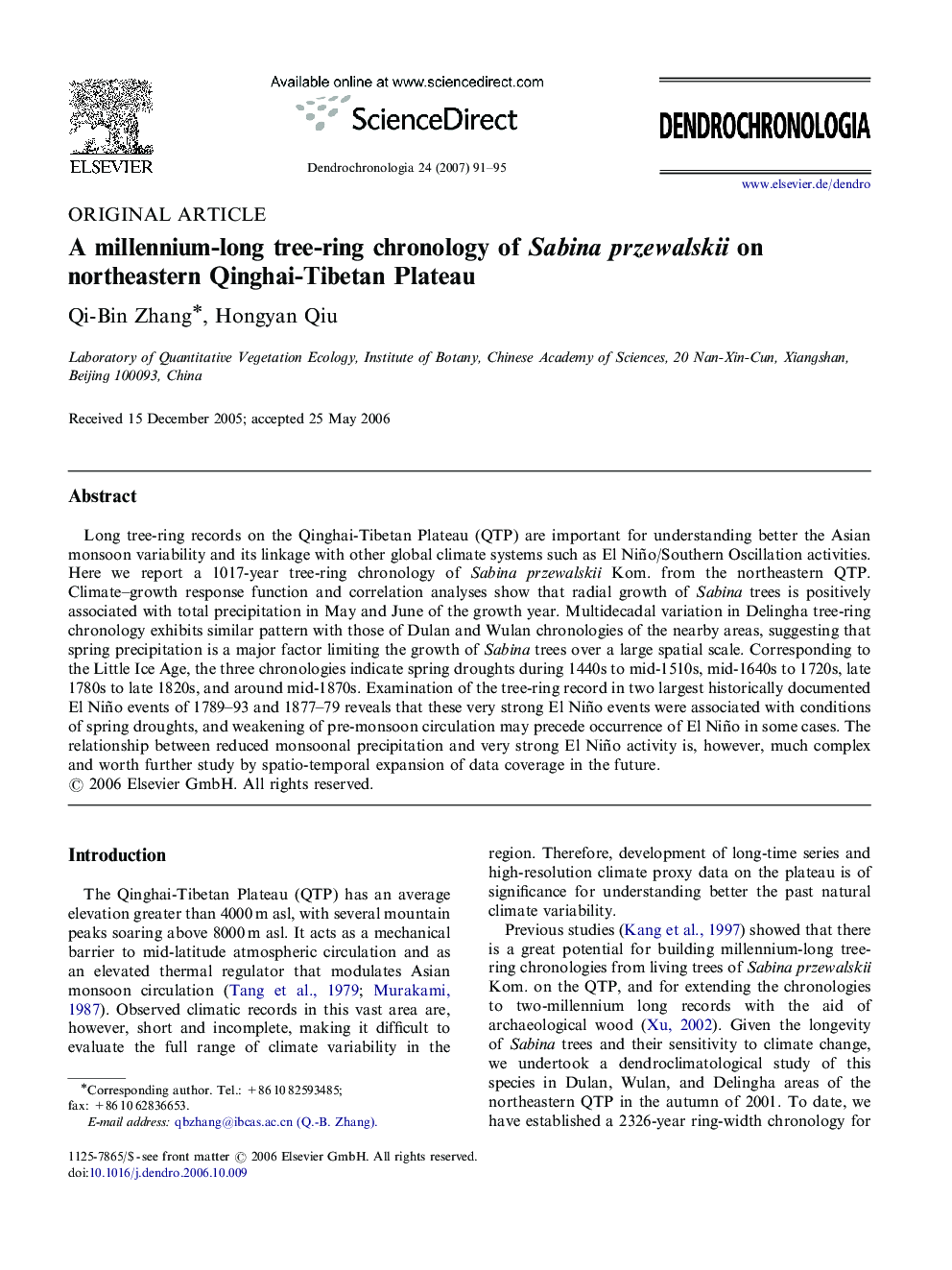| کد مقاله | کد نشریه | سال انتشار | مقاله انگلیسی | نسخه تمام متن |
|---|---|---|---|---|
| 85827 | 159129 | 2007 | 5 صفحه PDF | دانلود رایگان |

Long tree-ring records on the Qinghai-Tibetan Plateau (QTP) are important for understanding better the Asian monsoon variability and its linkage with other global climate systems such as El Niño/Southern Oscillation activities. Here we report a 1017-year tree-ring chronology of Sabina przewalskii Kom. from the northeastern QTP. Climate–growth response function and correlation analyses show that radial growth of Sabina trees is positively associated with total precipitation in May and June of the growth year. Multidecadal variation in Delingha tree-ring chronology exhibits similar pattern with those of Dulan and Wulan chronologies of the nearby areas, suggesting that spring precipitation is a major factor limiting the growth of Sabina trees over a large spatial scale. Corresponding to the Little Ice Age, the three chronologies indicate spring droughts during 1440s to mid-1510s, mid-1640s to 1720s, late 1780s to late 1820s, and around mid-1870s. Examination of the tree-ring record in two largest historically documented El Niño events of 1789–93 and 1877–79 reveals that these very strong El Niño events were associated with conditions of spring droughts, and weakening of pre-monsoon circulation may precede occurrence of El Niño in some cases. The relationship between reduced monsoonal precipitation and very strong El Niño activity is, however, much complex and worth further study by spatio-temporal expansion of data coverage in the future.
Journal: Dendrochronologia - Volume 24, Issues 2–3, 9 February 2007, Pages 91–95